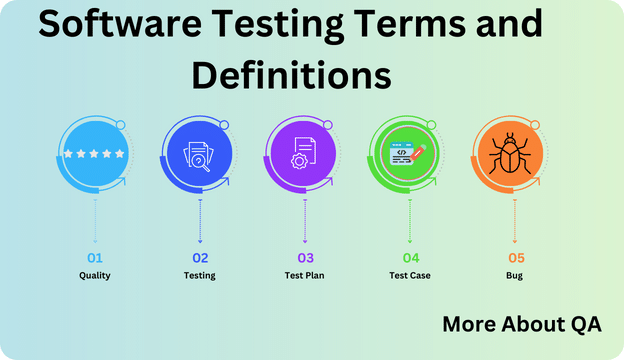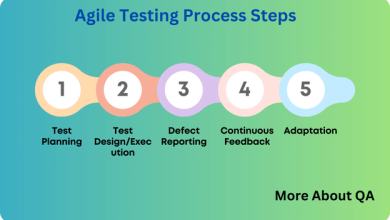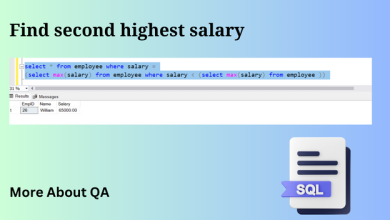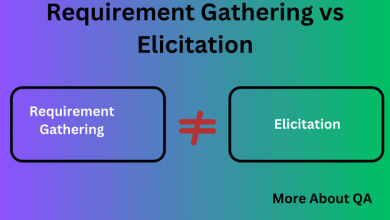
Software Testing Terms and Definitions need to be clear if you are working in the field of QA. Quality Assurance is an important phase or part of the software development process. Software testing checks that the final product is reliable, functional, and free from errors.
If you are specificly in search of understanding about QA and QC, we suggest to visit our this blog. Here are these terms with explanations to give you a clear understanding.
Software Testing
The process of validating a software application to identify any gap between expected and actual results. The aim is to ensure that the software functions correctly, meets user requirements, it is complete, and is free of defects.
Software Testing Terms and Definitions
The terms are large in number, and this blog will only focus on those terms that are mostly in use, for a complete set of terms and their definition you can search on the internet.
Baseline
A requirement or specification upon which the stakeholders agree, and which is a base for the development. Any change in these requirements comes with a proper change control process.
Requirement
A requirement is something that a user needs for a system to work as expected and meet certain rules or guidelines.
Software Quality
The features of the software that meets the specification and make customer satisfied.
Test Basis
All type of documents helps to extract the requirements of a component or system. Simply the source of information that helps to identify and develop test cases.
Test Case
A group of input values, preconditions, expected results, and postconditions, for a test condition, for example, to test a particular function to validate its compliance with a specific requirement.
Test Condition
An item or thing within a system that can be checked or tested, like a function, action, feature, or part.
Test Procedure specification
A document describes a sequence of actions for the execution of a test, that is test script test case.
Test Plan
A document that describes the scope, approach, resources, and schedule of intended test activities.
Test Scenario
A test scenario is a detailed document that has multiple test cases that cover end-to-end functionality. Test scenario covers all possibilities of all cases.
Test Script
A program or script written against test cases to automate the manual steps to speed up the test, normally called Test Automation.
Testing Types in Context of Software Testing Terms and Definitions
Here are the different types of software testing that i would like you to cover in software testing terms and definitions, they are:
Unit Testing: It verifies single components or modules or a function as they are developed.
Integration Testing: verify the interaction between two or modules components or systems. To validate interface interaction.
System Integration Testing: It is the end-to-end system of the system.
Regression Testing: Ensures that bug fixes haven’t developed any new problems.
Sanity Testing: Basic testing to decide further testing on the software.
Functional Testing: To validate the functional behavior of the software.
End-to-end Testing: To test the complete flow of the software.
Load Testing: To evaluate the system and resource handling under heavy load.
Stress Testing: Evaluates system behavior beyond the breaking point.
Performance Testing: Measures system behavior under various events.
Usability Testing: Evaluates user-friendliness and interactions.
Adhoc Testing: Informal or exploratory testing.
Compatibility Testing: Ensures compatibility with other system components.
Exploratory Testing: Dynamic testing that adjusts based on results.
Alpha Testing: Conducted after code completion but before customer release.
Beta Testing: Occurs after the product’s code is complete, often involving public distribution.
Pilot Testing: Involves users before release for familiarization and acceptance.
Acceptance Testing: Confirms product readiness for customer acceptance.
Bug Related terminology
The last set that is related to terms that are interchangeably used for Bugs are:
Error
A human mistake was made during the design and coding phase of software development.
Defect
Error leads to defects that can be found in documentation, or in code.
Bug
A term often used interchangeably with “defect.” A bug refers to a defect or flaw in the software that leads to incorrect or unexpected behavior.
Failure
The point at which a software application or system behaves incorrectly or crashes during its execution. Failures are the visible manifestation of defects or bugs during testing or actual usage.
Related Post : If you are not clear about the skill set, that is needed to be a software engineer, do read our blog on the said topic.
Conclusion
We have explained these “Software Testing Terms and Definitions” which is a stepping stone toward effective quality assurance and delivering reliable software products.
FAQs | Software Testing Terms and Definitions
What are the common challenges in usability testing?
Usability testing requires extensive planning to replicate real-world scenarios.
What is the key difference between incremental testing and integration testing?
Incremental testing focuses on testing an incomplete product, while integration testing checks the interaction between different modules.
How is acceptance testing different from system testing?
Acceptance testing confirms readiness for customer acceptance, while system testing validates an application’s accuracy and completeness.


